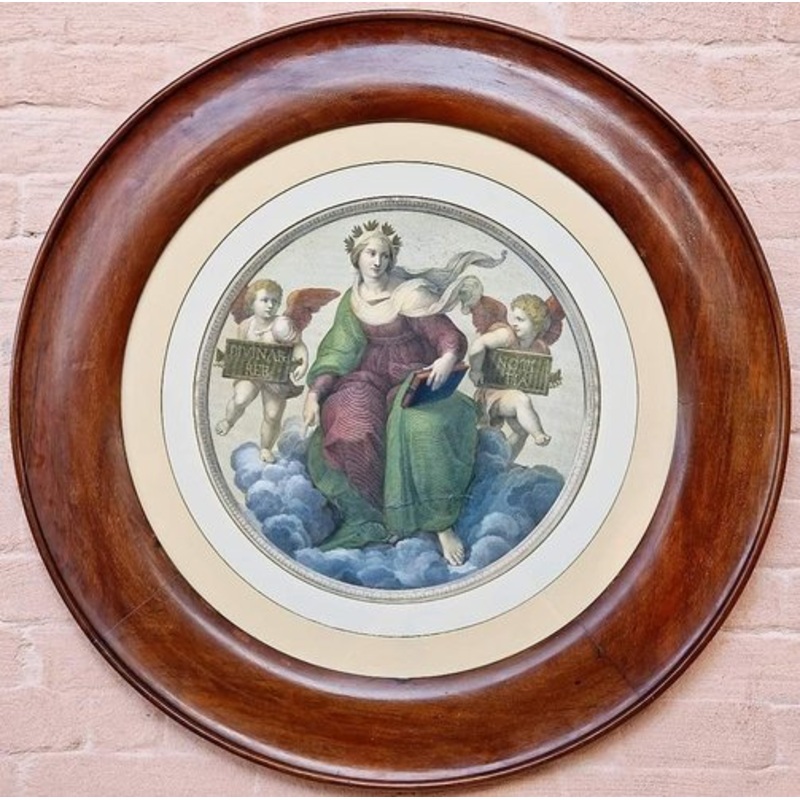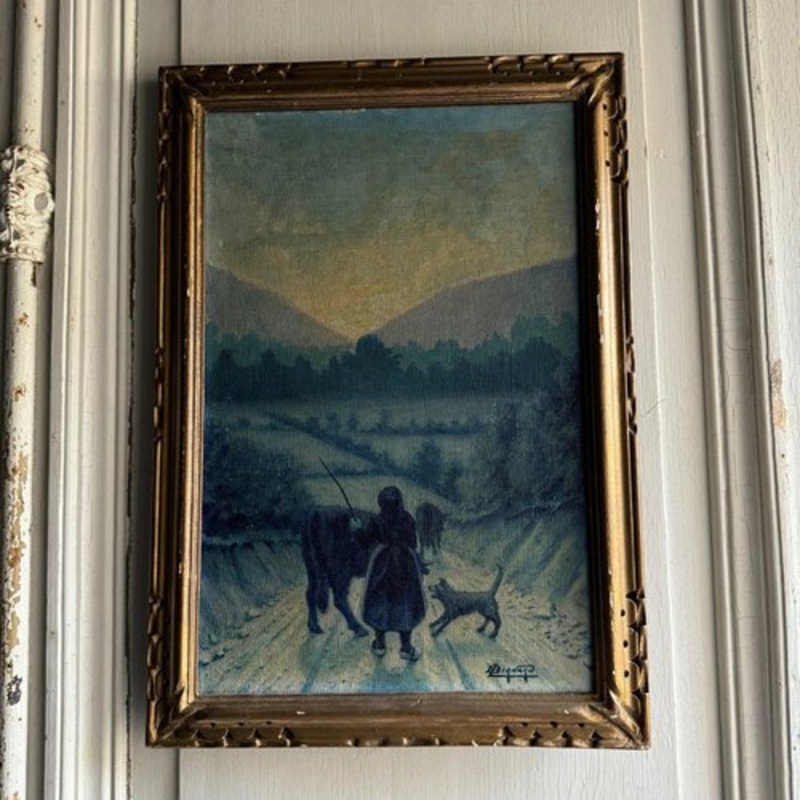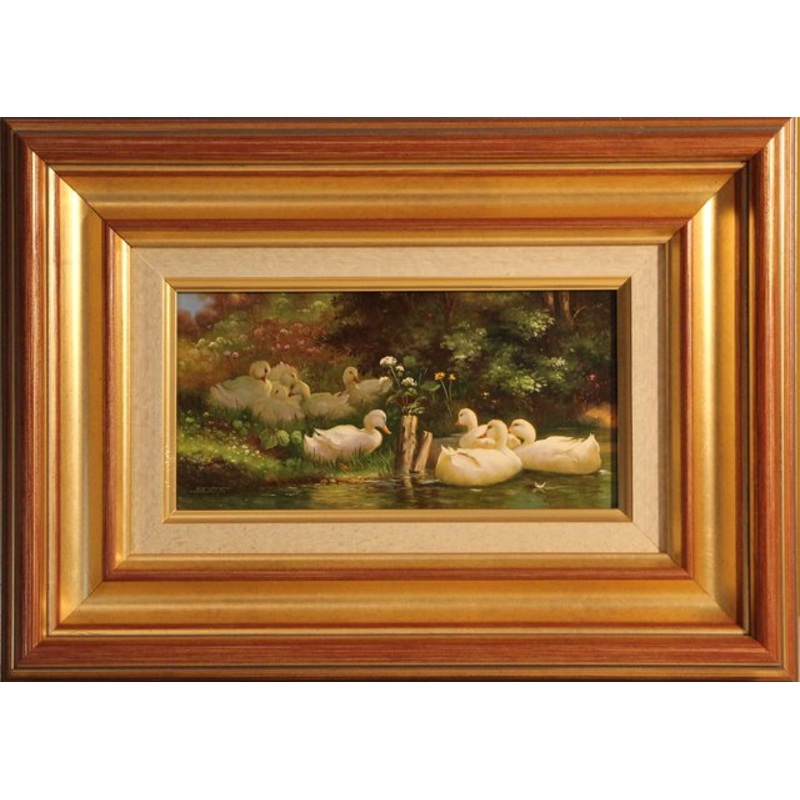Description
Testa muliebre (Head of a woman) is a beautiful black and white burin and etching on paper, realized by the artist Giovanni Brunetti da Ravenna, after Bernardino Nocchi, as the inscriptions on plates on lower margins report Bernardino Nocchi deline/ Gio. Brunetti incise Roma. This original print is numbered on plate in Roman numerals on higher margin: Tom II. /Tav. XIII” and is a plate from the series ”Illustrazioni de’Monumenti scelti Borghesiani gi esistenti nella Villa sul Pincio (..)date ora per la prima volta in luce dal cav. Gio. Gherardo De Rossi e da Stefano Piale sotto la guida di Vincenzo Feoli”, by Ennio Quirino Visconti, published by Stamperia de Romanis in Rome, 1821. Original title: Testa muliebre maggiore del naturale di bizzarra acconciatura creduta di Berenice Regina d’Egitto Translated Title: A woman’s head greater than the natural one with a bizarre hairstyle believed to be that of Berenice, queen of Egypt This old masters original prints shows a beautiful piece of the Borghese’s collection represented in a neoclassical style with a bizzarre haistyle. In excellent conditions with some light signs of the time with some sporadic minor stains along the lower margins, some thinning of the paper on the left margin, a usual and imperceptible yellowing of the paper on the margins, this wonderful etching has preserved still today his beauty and his fresh impression. Illustrazioni de’ Monumenti scelti Borghesiani This collection in two volumes is a beautifully detailed catalog of classical sculptures collected by Prince Borghese (1730-1800) in his Villa on the Pincio. Ennio Quirino Visconti (1751 – 1818) wrote the texts that accompany the large branches depicting. To these writings, which were available by the son of the illustrious archaeologist, the publishers added only a few illustrations relating to some minor monument of which copper had already been engraved. The engraved title-plate are signed by draughtsmen like Agostino Tofanelli, Stefano Tofanelli, Bernardino Nocchi, Domenico de Angelis or Teodoro Matteini, and by engravers Pietro Fontana Veneto, P. Vitali, Pietro Bettelini, Giovanni Folo Veneto, Giovanni Brunetti da Ravenna, Giovanni Ottaviani, Francesco Cecchini, Gio. Batta. Leonetti, Girolamo Carattoni, Domenico Cunego, Luigi Cunego, Alessandro Mochetti, Luigi Pizzi, Angelo Campanella or Giacomo Bossi. The Volume I shows ancient full-length statues, of the Borghese warrior by Agasias (two plates), Greek gods and heroes and Roman famous historical figures; the last two plates represents antique Egyptian deities. There are plates representing ancient bas-reliefs, sarcophagi, of mythological subjects, the Borghese Vase, portrait busts, a vase on an altar, two statues of Amor; and two modern statues, by Bernini (the Apollo and Daphne, and the David). Trs bel ouvrage writes Brunet, Grand ouvrage, le seul qui mrite, parmi ceux sur la villa Borgese, de figurer dans le chapitre aux Galeries et Collections Vinet said, looking at this plate. Bernardino Nocchi (Lucca, 1741 – Rome, 1812) Bernardino Nocchi moved to Rome in 1769 with his colleague Stefano Tofanelli, entering the school of Niccol Lapiccola where he developed a baroque style with neoclassical suggestions. Bernardino Nocchi was noticed by Pope Pius VI, who in 1780 entrusted him with the painting of the Sacred Apostolic Palaces and then in 1785 with the Print Room of the Vatican Library. But he also works outside the capital, in Gubbio where in 1797 he realizes the transit of St. Joseph in the Church of San Secondo, in Spoleto, in Lucca and in Catania. Returning to Rome, Nocchi painted some of his best paintings: Prince Camillo Borghese in 1799, The apotheosis of Saint Prudenziana, Saint Novato and Saint Timothy in 1803 and Pius VII in 1807. This artwork is shipped from Italy. Under existing legislation, any artwork in Italy created over 70 years ago by an artist who has died requires a licence for export regardless of the works market price. The shipping may require additional handling days to require the licence according to the final destination of the artwork.
| Production Period | Before 2010 |
|---|---|
| Detailed Condition |
Very Good This vintage/antique item has no defects, but it may show slight traces of use. |
| Product Code | ZCI-757846 |
| Restoration and Damage Details |
Please note that an additional handling period of up to 4 weeks may apply to this item
|
| Color | Ivory |
| Width |
44 cm 17.3 inch |
| Depth |
1 cm 0.4 inch |
| Height |
59 cm 23.2 inch |
| Duties Notice | Import duty is not included in the prices you see online. You may have to pay import duties upon receipt of your order. |






Reviews
There are no reviews yet.